Comet Lovejoy (2014 Q2) is now visible in the night sky, and while you’ll need binoculars or a low-power telescope to see it best, the perfect window of opportunity to see it for yourself is starting now! We’ve heard from some readers that they’ve had some trouble spying it, but photographer Brian Moran has snapped the perfect picture to show you EXACTLY where to look for the comet. All you need to do is look for the easy-to-find constellation of Orion, and swing your eyes to the right (about 20 degrees) and up slightly up.
Brian said he was having trouble finding Lovejoy, but perhaps it may have been because he was looking a little too close to Orion. “Orion is a great frame of reference, but all of the photos I saw online made it seem like it was closer to Orion than it actually is,” he said.
Comet Q2 Lovejoy is currently shining at 4th magnitude, and if you’ve got a really dark sky, you may be able to see it with the unaided eye. as our David Dickinson explained, this comet is now entering “prime time” evening sky viewing, as it is visible over the southern horizon at around 9:30 PM local time this weekend, then 8:00 PM on January the 15th, and just before 6:00 PM by January 31st.
Tonight (Thursday, January 8) we’ll have a “two-hour window of darkness between the end of twilight and moonrise for those of us in the world’s mid-northern latitudes. Each night after tonight the Moon rises nearly an hour later,” said Sky & Telescope’s Alan MacRobert.

While C/Q2 Lovejoy passed closest to Earth yesterday (January 7) at a distance of 0.47 a.u. (44 million miles; 70 million km), the comet should remain at about the same brightness as it crosses the sky into Taurus, Aries, and Triangulum, higher and higher in early evening. It will pass 8° west-southwest of the Pleiades on the evening of January 17th.
MacRobert also explained that although the comet is beginning to recede from us, its intrinsic brightness should still be increasing a bit. “That’s because it doesn’t reach perihelion (its closest to the Sun) until January 30th (at a rather distant 1.29 a.u. from the Sun),” he said. “By that date the comet should finally be fading slightly from Earth’s point of view. And in late January the Moon returns; it’s first-quarter on the 26th.”
Here are some great images of Comet Lovejoy taken by Universe Today readers. Be sure to check out our Flickr group for more great images! We have nearly 1,500 members and new photos are added every day. And if you take an astrophoto, join our group and submit your photos! We may use your image in an upcoming article!
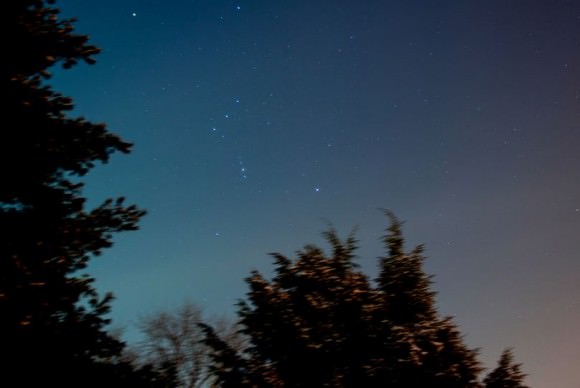
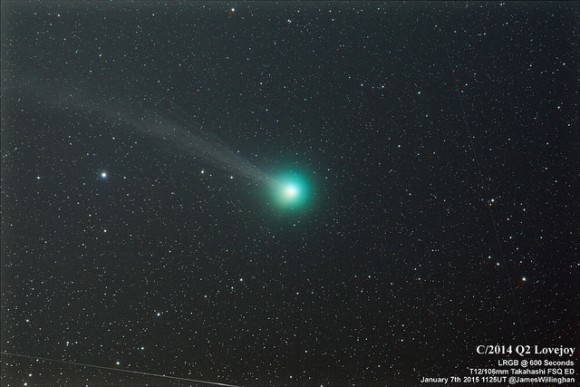
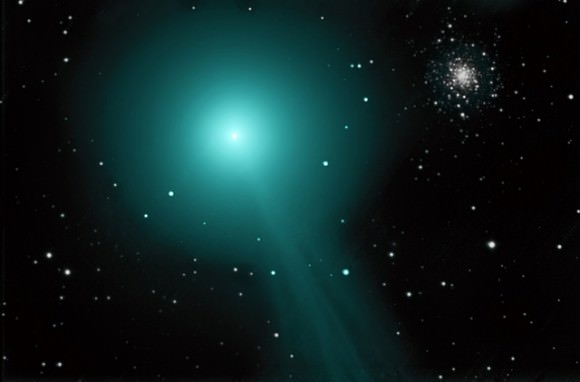
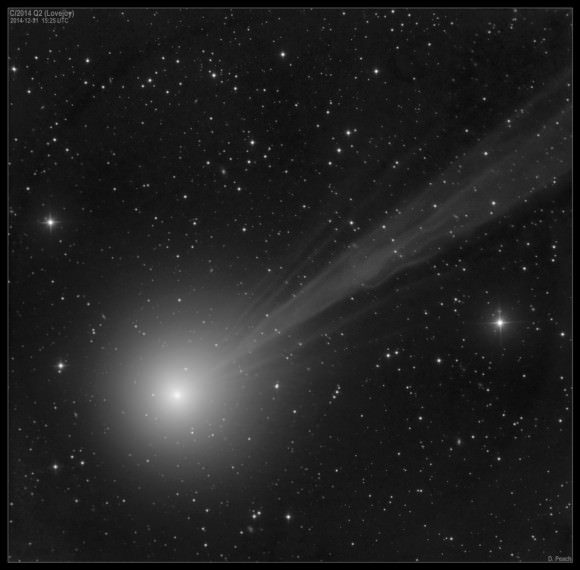
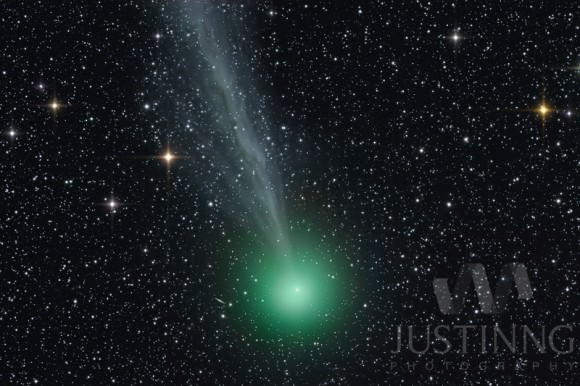
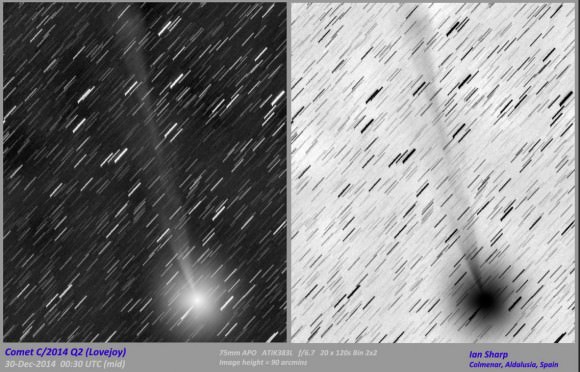
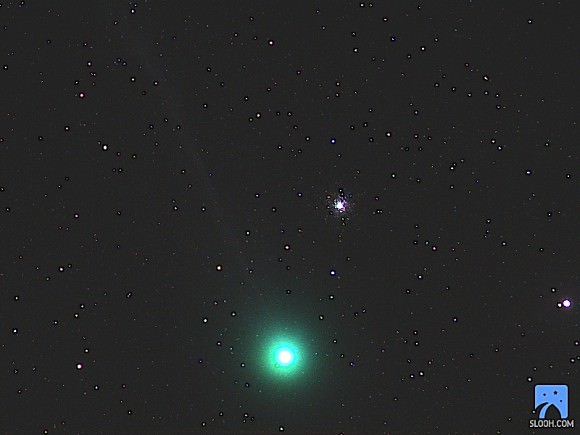
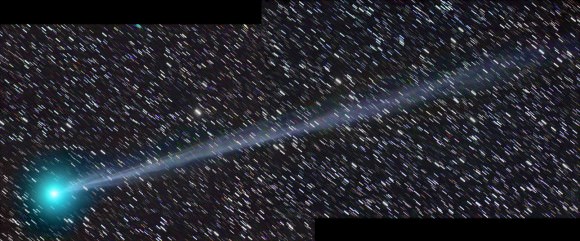

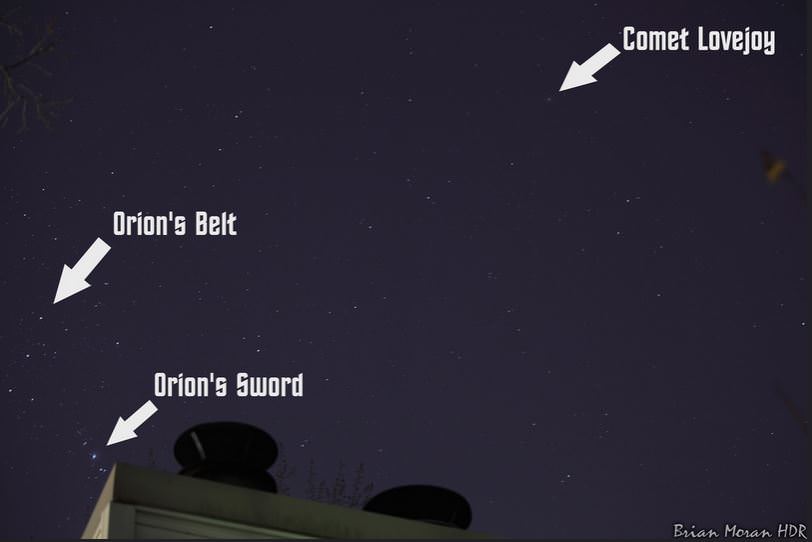
Me too! Last night using binoculars I also started by looking too close to Orion. Then later, I went out into the back yard to check/look thru ONE last hole in the trees.. and there it was! No mistaking it! YIPPEE! This is my 50th comet! I LIKE!
It’s been cloudy here all day – hoping for a break later – I want to see that sucker again! Will it get brighter? Another ion tail disconnect?
Last night I got a break in the clouds and saw that comet again! The conditions were dicey, but the comet was so bright finding it was not a problem! It was easy to see even through a marine/coastal layer of thin clouds…..*
Oh yeah.. Spaceweather did report another tail disconnect today…
I agree the charts tend to make you look too close to Orion – however with a bit of effort we found it at the Observatory. For a number of people it was their first ever comet. We hope for clear skies for a while.
Roseland – UK